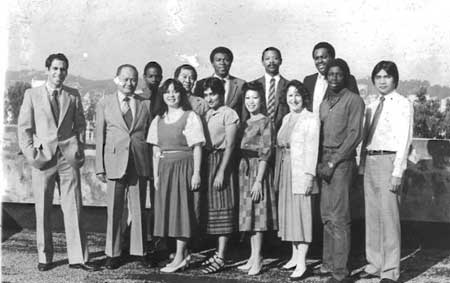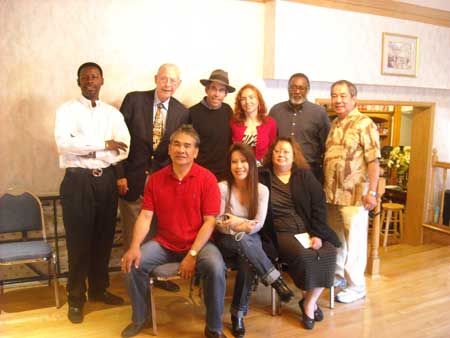In early 1982, I left a law firm and went to work full time on a fledging job training group in San Francisco, the San Francisco Renaissance Center. Renaissance had been started a few years earlier by labor leader Walter Johnson, then the head of Retail Clerks Union Local 1100, and he soon recruited Bill Russell-Shapiro, a prominent local businessman. Renaissance was a labor/business collaboration, aimed at innovative approaches to both job training and job creation
Over the next five years, Renaissance launched a series of job training programs, small businesses, and a Renaissance Entrepreneurship Center. The training programs were a mix of vocational programs (business machine repair, computer repair), literacy/job preparation for young women on welfare, and direct placement of older workers. The businesses, intended to generate jobs and work experience, totaled five at one time: carpet cleaning, cable assembly, business machine repair, messenger service, and a convenience store in the financial district. Renaissance spanned ethnic groups and ages. A photo of part of the Renaissance staff from 1985 is below.

Much of Renaissance has continued to the present. The Renaissance training, headed by Tempi Priestly, is now located in the Bayview District, and focuses on ex-offenders. The Renaissance Entrepreneurship Center, built up by Claudia Viek, has its own building on 5th Street; and Claudia herself is a leader in the micro-enterprise movement in California.
A few weekends ago, we had a 25 year Renaissance reunion, organized by Rose Bogero who has been with Renaissance all 25 years. Walter Johnson, now in his eighties, attended, as did Jay Jones, a recent graduate of Boalt Hall when he joined Renaissance in 1982. Relio Bunag, who headed the older worker program with Carlos Ver, and Patt Patterson and Gerard Murray of the business machine repair shop. A photo of a portion of attendees—now 25 years older–is below.

“We drank a toast to innocence, we drank a toast to now”, Dan Fogelberg sings of a long-ago reunion. So too we reminisced about the past, and talked of our current activities. Rose prepared a DVD with old photos that we watched—did we ever look like that? Jay told us about his experiences in the Silicon Valley. Over the years Jay has been involved in several software start-ups that went public, and is currently the Chief Financial Officer of a 200-person software firm in Menlo Park—some distance from the Renaissance Cable Assembly business that he developed.
Renaissance was launched just as the recession of the early 1980s was hitting, in a time not so dissimilar to the present. That recession passed, just as this one will—though the present recession likely will have greater long-term impacts on employment. As might be expected, many of the employment issues of that time continue today—deindustrialization, low wage workforce, technology and job elimination.
One issue that has changed a lot is the “underclass” in California. In the early 1980s, there was widespread concern among policy analysts that America was seeing a new class of poor people and facing a new threat. The “underclass” was becoming more and more entrenched in antisocial behaviors—welfare, teen pregnancy, crime, drug addiction. In 1982, Ken Auletta published The Underclass, which discussed the specter of larger and larger numbers of Americans on welfare, outside the work world.
This specter has not materialized, and its failure to materialize carries important policy lesssons for California. I’ll have more to say on this in the next post, “California’s Underclass”.

